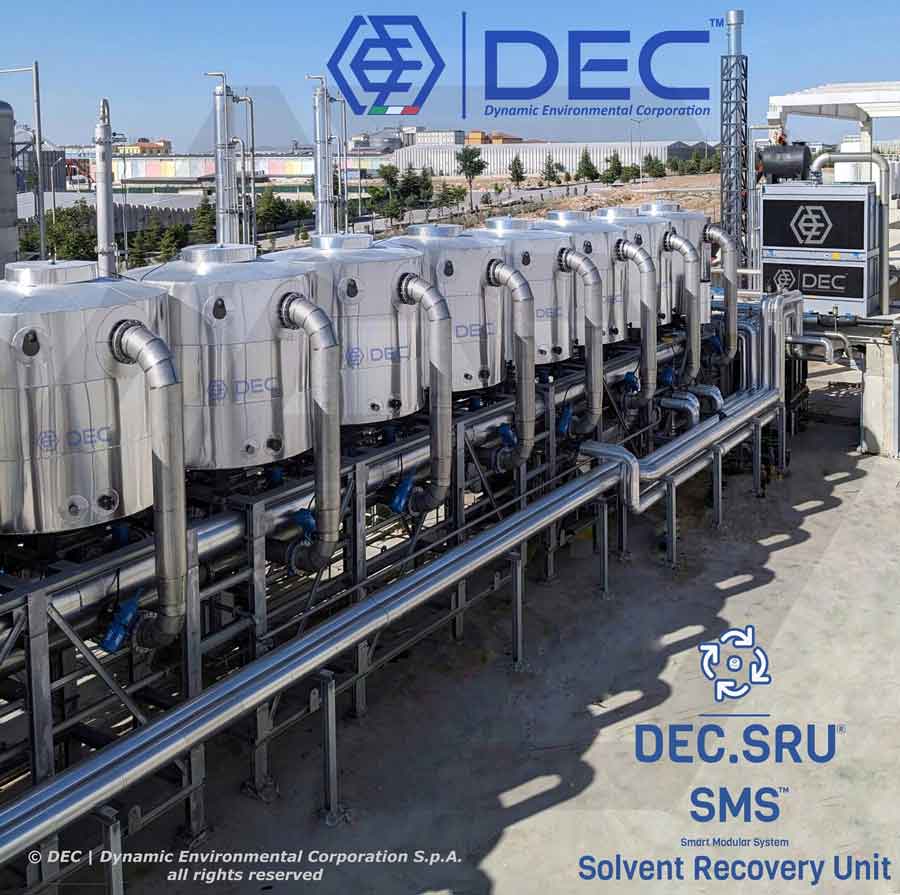Dec Impianti
DEC is offering several decades of experience in design and installation of the most technically advanced and efficient vapor phase activated carbon solvent recovery systems.
Apart from its environmental advantages, Solvent Recovery Unit (DEC.SRU™) offers compelling economic benefits by enabling the recovery and direct reuse of solvents. Solvents play a vital role in various manufacturing processes, and their efficient use is crucial for cost-effective production. Solvent Recovery Unit (DEC.SRU™) allows for the direct reuse of recovered solvents, significantly reducing the need for new solvent purchases.
The cost savings achieved through solvent recovery contribute to an impressive Return on Investment (ROI): industries adopting Solvent Recovery Unit (DEC.SRU™) can experience a substantial reduction in operational costs related to solvent procurement, subsequently enhancing their overall financial performance.

Solvent Recovery Unit (DEC.SRU™) contributes to the generation of important savings by offering an alternative to the conventional practice of thermal oxidation (DEC.XTO™): rather than incurring expenses associated with purchasing fresh solvents, industries can capitalize on the cost-effective option of reusing recovered solvents. The financial implications of such a sustainable approach extend beyond immediate savings on solvent procurement, positively impacting the overall profitability and competitiveness of manufacturing operations.
Here is a simplified overview of how DEC.SRU™ (SRP | SRS) works:
- Filtration: the SLA is filtered to remove most of the particulate matter; this is important to prevent the particulate matter from clogging the adsorption bed in the static concentrator;
- Temperature control: the SLA is temperature-controlled to ensure that it is at the optimal temperature for adsorption; the optimal temperature will vary depending on the type of solvents being removed and the desired adsorption efficiency;
- Adsorption: the SLA is driven through the static concentrator to adsorb the solvents; the activated carbon in the static concentrator adsorbs the solvents, thanks to its large surface area and variable porous structure;
- Regeneration: once an AC adsorber is saturated with solvents, it is taken offline and regenerated; in-situ regeneration is used to (desorb) drive the solvents off of the activated carbon;
- Condensation: the desorbed solvents are condensed in a heat exchanger, recovered in a tank;
- Reuse: the recovered solvents can then be reused in the production process.
